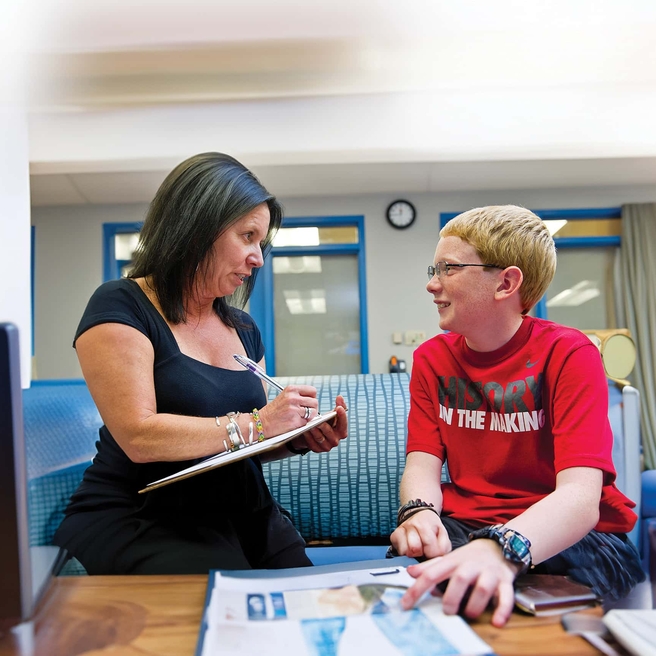What are cerebral palsy gait disorders?
Children with cerebral palsy may have a number of bone, joint and muscle problems that affect their walking (gait).
- Spasticity or contractures of muscles can cause the knees to flex at the hip knee and ankle which can cause difficulty or increased energy requirement of walking.
- Internal rotation of the thigh bone, external rotation of the lower legs, and severe flat feet combine to limit the "push-off" ability to move forward, making walking slow.
- When the muscles are too strong on one side and too weak on the other side, the muscle imbalance can result in gait abnormalities or dysfunction.
Testing and diagnosis
Before the medical team decides on a surgical treatment for your child with a gait disorder, he will undergo a gait analysis. Gait analysis allows our surgeons to treat your child with more precision, and makes it possible to address all of your child’s gait problems at once.
Treatments
Surgical options
Muscle lengthening procedures
Muscle lengthening procedures may be performed surgically to improve joint motion and gait, and to prevent deformities. Lengthening procedures can also be used to decrease the need for bony surgery in younger children, and reduce tone on a more permanent basis than botulinum toxin.
Tendon transfers
Tendon transfers allow muscles to be partially transferred to a different location in the joint, which can balance the forces across a joint in a better way.
Bony reconstruction
Bony reconstruction allows for direct restoration of anatomic position of joints, or relief of rotational abnormalities which result in brace intolerance.
Joint fusion
In cases where the deformity is too severe to be managed with simple realignment, fusion can provide a durable option to provide long term support of a child’s skeleton.
Surgical recovery
Post-operative rehabilitation is key after surgery. Our cerebral palsy team will develop a plan for your child that will lead to a rapid return to maximum function. This may include either an inpatient or outpatient program at Children's Seashore House on CHOP’s Main Campus.
Surgery for Gait Dysfunction
Most children with cerebral palsy with gait disorders have issues which need to be addressed either with surgery, bracing or medications at multiple levels. We design surgeries to correct as many bony and soft tissue deformities as possible during a single trip to the operating room.
In the case of children with involvement of both legs, this involves the use of two surgical teams, allowing for a more comprehensive approach to treatment. After the one surgical event, your child will only require one course of rehabilitation, rather than multiple surgical episodes and multiple courses of rehabilitation and recovery.
More about surgery for gait dysfunction
Learn more about the many surgical techniques that might be used to treat gait dysfunction in children with neurologic disorders, including preparing for and recovering from surgery.
Resources to help
Cerebral palsy gait disorders Resources
Cerebral Palsy Program Resources
We have gathered resources to give you information and help you find answers to your questions. We hope this makes your family’s life a bit easier.
Reviewed by Keith D. Baldwin, MD, MPH, MSPT
